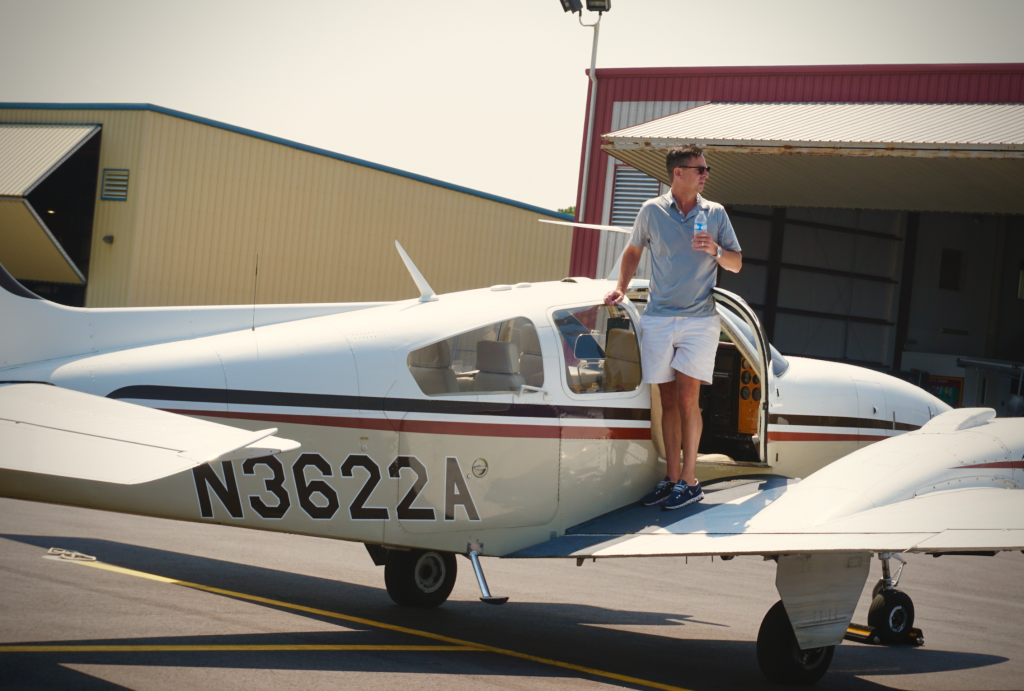8 Tips I Wish I'd Known Before Buying My First Aircraft

After flying for 35 years, including seven years in Marine Corps Helicopters, along with some time in a wide array of general aviation aircraft which took me to a total of about 2200 hours, it became apparent that I was going to need to purchase an aircraft to fully enjoy the benefits of flying.
For me, these primarily involved the opportunity to travel in a few hours what would otherwise be a six hour drive. Or, fly myself to a destination while avoiding the burden of TSA or other commercial airport staff who, at times, seem focused on making your flying experience less enjoyable!
So, with the benefits of purchasing an aircraft obvious, I began researching the best path for my purchase while also looking for the best aircraft to fit my needs. After wishfully looking at Trade-A-Plane for ten (or more) years, I felt like I knew what I was looking for, but quickly realized the process was not even remotely like browsing Cars.com to find your next used vehicle. I kept thinking, I’m a 2200 hour commercial and instrument pilot, how hard can this be? Shouldn’t I be prepared and fully equipped to be a responsible aircraft owner? But once I’d begun, it didn’t take long to realize how little I knew about the search, identification, the purchase and extensive follow-up tasks required to even purchase an aircraft.
Despite my thousands of hours spent in an aircraft – renting, borrowing or flying for Uncle Sam – I was clueless about the processes and requirements necessary to purchase an aircraft of my own. What, exactly, should I be looking for in terms of engine time, prop time, condition, instruments or paint? It was at this point that I realized that none of my extensive training had ever touched on topics important to aircraft ownership. While I’m well versed in pre-flight processes, tracking both Hobbs and Tach time and how to fly aircraft, I wasn’t sure what I needed to look for when purchasing one. Ask me about the basics of aerodynamics and piston engine operation, but don’t ask me where to start when you’re looking to buy an aircraft. Sure, I’d been exposed to the FAR’s regarding the responsibilities of the pilot, which at times can cross over into some of the aircraft owner’s responsibilities, but not really. This reality became more apparent as I started working with John Bell at John Bell Aircraft to begin looking for a plane. To this day I’m still amazed when I consider how little knowledge of purchasing and managing an aircraft pilots acquire as they accrue time flying others’ aircraft.

Everyone’s first purchase is a learning experience. And like mine, it is an experience you’ll be woefully unprepared for if you proceed on a typical aviation path. You can smooth your transition by taking advantage of the numerous resources available or you can dive right in solo and will likely learn tougher lessons, both financial and mechanical, of aircraft ownership along the way. I definitely learned a few hard lessons as I moved through the process of my purchase, but I also identified a list of practical resources that I know will help future first-time buyers:
- Determine which aircraft you’d like to purchase considering your experience, affordability and performance goals.
- Determine what equipment you’d like to have on the aircraft (avionics, etc.) and prioritize your list. It’s always more cost-effective to save and buy what you like versus installing new equipment later. Be prepared to make trade-offs.
- Identify an impartial partner who has experience in both buying and selling aircraft. Rely on this person to mentor you step-by-step throughout the process.
- Take advantage of all available resources and educate yourself on the buying process. AOPA has a number of useful tools to equip new buyers with helpful information. Also, take advantage of aircraft specific groups and message boards to learn as much as you possibly can about the aircraft you plan to buy. For me, it was the American Bonanza Society.
- Plan a thorough pre-buy inspection and identify an A&P who knows the type of aircraft you’re purchasing to conduct the pre-buy. Many of the good A&Ps are busy, so don’t wait until the last minute to find the person you want to use to ensure they’ll be available.
- Identify an insurance broker who is experienced with general aviation aircraft and who will understand your insurability in the aircraft and what the anticipated insurance costs look like. You may have to fly with an instructor first or gain a certain number of solo flight hours before your insurance will cover you with passengers. And trust me, it’s important to know this before the purchase!
- Prepare a plan for the transaction itself, whether you attempt to handle it on your own or with an expert (i.e. broker, dealer or other independent expert). The process for aircraft registration, insurance, financing, transferring of funds and other elements of the transaction should all be included in your plan.
- Be sure to have a good understanding of how you will manage and track your aircraft responsibilities. Taking advantage of Coflyt’s intelligent aircraft software will not only help you streamline management but can be a significant advantage as you start flying your new aircraft.
While making your first aircraft purchase can be an absolutely daunting task, if you have a love for aviation and passion for aircraft, the experience can be extremely exciting and rewarding. Suggestions included are not intended to cover all the details involved in purchasing an aircraft, but if you prepare with these tips in mind, your purchase experience should be much more enjoyable!

